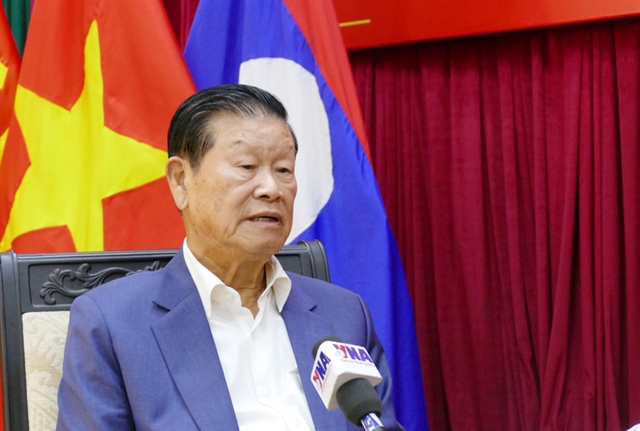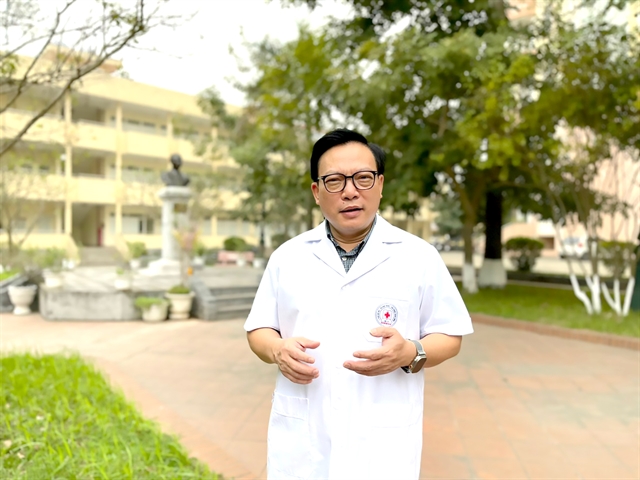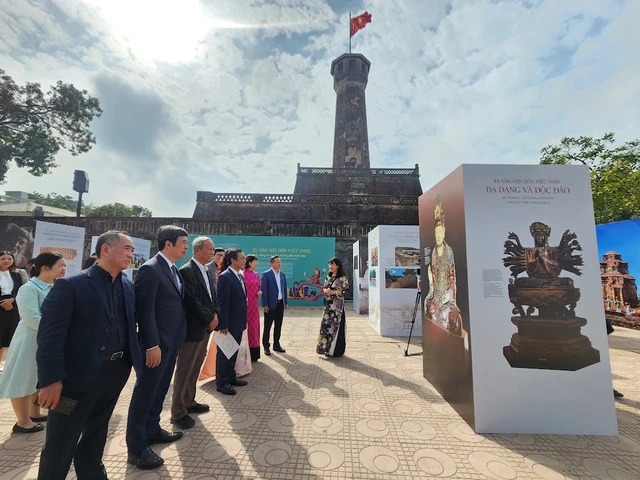 Opinion
Opinion

 |
| Hoàng Đình Cảnh, Head of the National Institute of Malariology, Parasitology and Entomology (NIMPE). — Photo from Việt Nam Government Portal |
On World Malaria Day (April 25), the Việt Nam Government Portal had talks with Head of the National Institute of Malariology, Parasitology and Entomology (NIMPE) Hoàng Đình Cảnh on the country's goal of eliminating malaria by 2030.
Under the National Strategy for Malaria Prevention and Elimination in Việt Nam for 2011-20 with a vision to 2030, our country aims to end malaria by 2030. Can you talk about the roadmap for malaria prevention and the results achieved so far in Việt Nam?
Following the national strategy adopted in 2011, the roadmap for malaria elimination in Việt Nam has also been approved by the Ministry of Health.
On October 25, 2017, the Central Executive Committee reiterated the goal that Việt Nam will become a certified malaria-free country by 2030, in Resolution 20-NQ/TW.
In comparison to 2011, in 2023, the number of malaria cases in our country was 448, a decrease of 97.3 per cent; the number of severe malaria cases decreased by 89.19 per cent, and the number of deaths due to malaria decreased by 85.71 per cent.
On World Malaria Day 2024, our theme is "Pooling all efforts to eliminate malaria in Việt Nam," aiming to enhance access to healthcare services for malaria prevention.
How do you evaluate the current progress of malaria prevention in our country against the goal of ending malaria by 2030? Are we on the path to meet this deadline?
By the end of 2023, 46 provinces in Việt Nam have been recognised as malaria-free. Among the 17 provinces and cities where malaria is still an issue, transmission still occurs locally, but the number of affected villages and communities is decreasing. Việt Nam is determined to eliminate malaria by 2030.
What are some difficulties in malaria prevention activities in our country? How do these difficulties affect the efforts?
To eliminate malaria, all cases and disease clusters must be investigated, diagnosed early, treated promptly, and mosquito breeding grounds must be addressed through residual spraying, chemical impregnation of bed nets and public awareness campaigns.
However, currently, there are difficulties in diagnosis at the grassroots level due to the lack of microscopes, or where there are microscopes, laboratory technicians' detection capacity is low as they haven't seen the parasites for a long time.
Việt Nam has managed to cut the number of malaria cases to below 500 cases/year, malaria is currently mainly concentrated in certain districts such as Khánh Vĩnh District (Khánh Hoà Province), Mường Tè District (Lai Châu Province) and Krongpa District (Gia Lai Province), but we are facing several challenges and difficulties.
First, Việt Nam is a tropical country with large areas of forests and mountains, providing favourable conditions for mosquito breeding, making it difficult to control and get rid of mosquitoes, especially in forests and plantations. Currently, there are still over six million people living in malaria-endemic areas.
Second, imported malaria cases are increasing, especially malaria from individuals coming from Africa.
Third, there is the issue of insecticide resistance among mosquitoes.
Additionally, keeping track of/managing population movements is also very complex and beyond the capacity of the health sector alone, requiring the involvement of different local authorities, departments, and organisations.
Fourth, there is a reduction in both personnel and funding for malaria prevention, with international organisations gradually cutting funding as the disease decreases. This will lead to a shortage of financial resources for vector surveillance and disease monitoring.
This raises the risk of malaria resurgence in the case of imported or asymptomatic cases spreading the disease unnoticed among the community, while health responses are too passive and fail to be implemented in time.
Fifth, the personnel system in malaria prevention agencies is insufficient and weak, especially at the district and commune levels. Even at local centres for disease control, there is only one department for parasitic diseases, with only about 5-7 staff members; district and commune levels lack personnel for active vector surveillance, disease investigation and community outreach.
Personnel at the grassroots level also often experience changes, so it takes time to get them fully equipped with sufficient and up-to-date knowledge on malaria.
 |
| Medical workers at Khánh Vĩnh District (Khánh Hoà Province) took samples for malaria testing. — VNA/VNS Photo |
Facing these limitations, do you have any proposals or recommendations for Việt Nam to achieve the goal of malaria elimination by 2030?
Comprehensive solutions are needed to eliminate malaria in Việt Nam by 2030.
Ultimately we must pool all efforts to reach the goal. This involves building a malaria elimination strategy to mobilise the participation of the whole society and invest local budgets to replace dwindling foreign aid sources, maintaining sustainability of the efforts.
At the same time, we need to strengthen communication, policy advocacy, maintain and reorganise the system of specialised personnel - disease surveillance system, treatment system in healthcare - active surveillance and mosquito control; train and retrain of human resources; keep up the surveillance and reporting systems; and apply information technology.
We need to continue with scientific research, epidemiological investigations, vector control, drug resistance studies, all of which will provide scientific evidence to offer appropriate professional guidance.
We also need to proactively assess and prevent malaria resurgence in areas where malaria has been eliminated.
You highlighted the limitations in human resources for malaria prevention work, do you have any specific proposals for training this workforce?
Presently there is no specialised training in malaria. Disease control/health workers are responsible for, and carry out malaria-related activities based on the tasks assigned by their employing units.
Basically, there are three groups of tasks: investigation, surveillance, case management and statistics reporting; diagnosis, testing and treatment; and mosquito control and prevention.
These personnel need to be trained in malaria prevention work to improve their knowledge and skills when performing their duties. However, due to budget constraints, malaria workers, especially at the grassroots level, do not get regular training.
To guarantee malaria elimination and prevent malaria resurgence post-elimination, malaria workers need to have good knowledge and practical skills. To achieve this, they need to be trained and retrained, every year, in all three abovementioned task groups.
Units with needs can send their workers to the National Institute of Malariology, Parasitology and Entomology for proper training and handle malaria prevention tasks at the local level.
On World Malaria Day, what message do you want to convey to the malaria workforce and the people?
For healthcare workers engaged in malaria work, let us strive together to overcome difficulties and continue to dedicate ourselves to the noble mission of eliminating malaria in Việt Nam.
For the public, let us proactively prevent malaria by using mosquito nets/impregnated nets regularly, especially when sleeping in rural areas or forests. When experiencing fever or suspected malaria, please seek medical care for prompt examination, testing and treatment. — VNS




